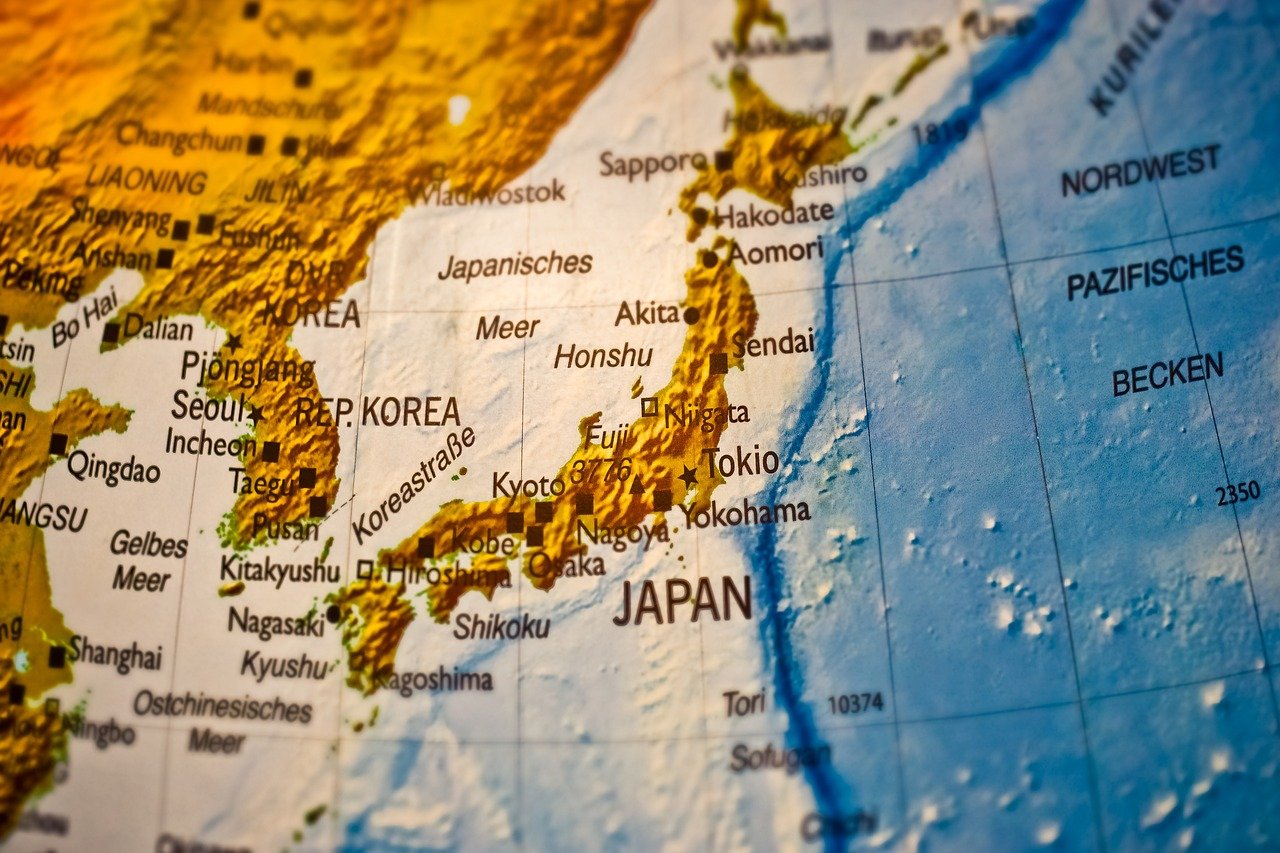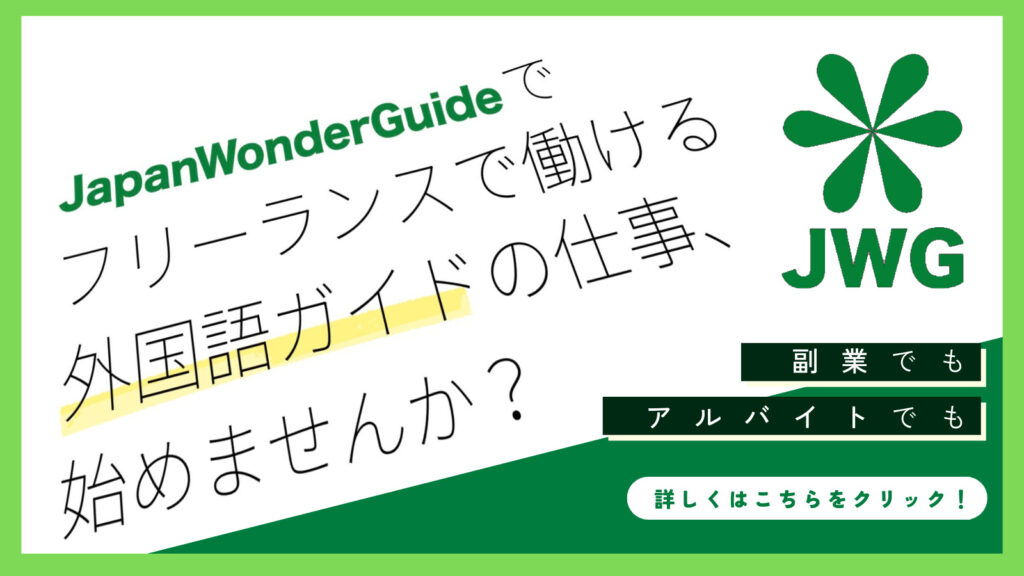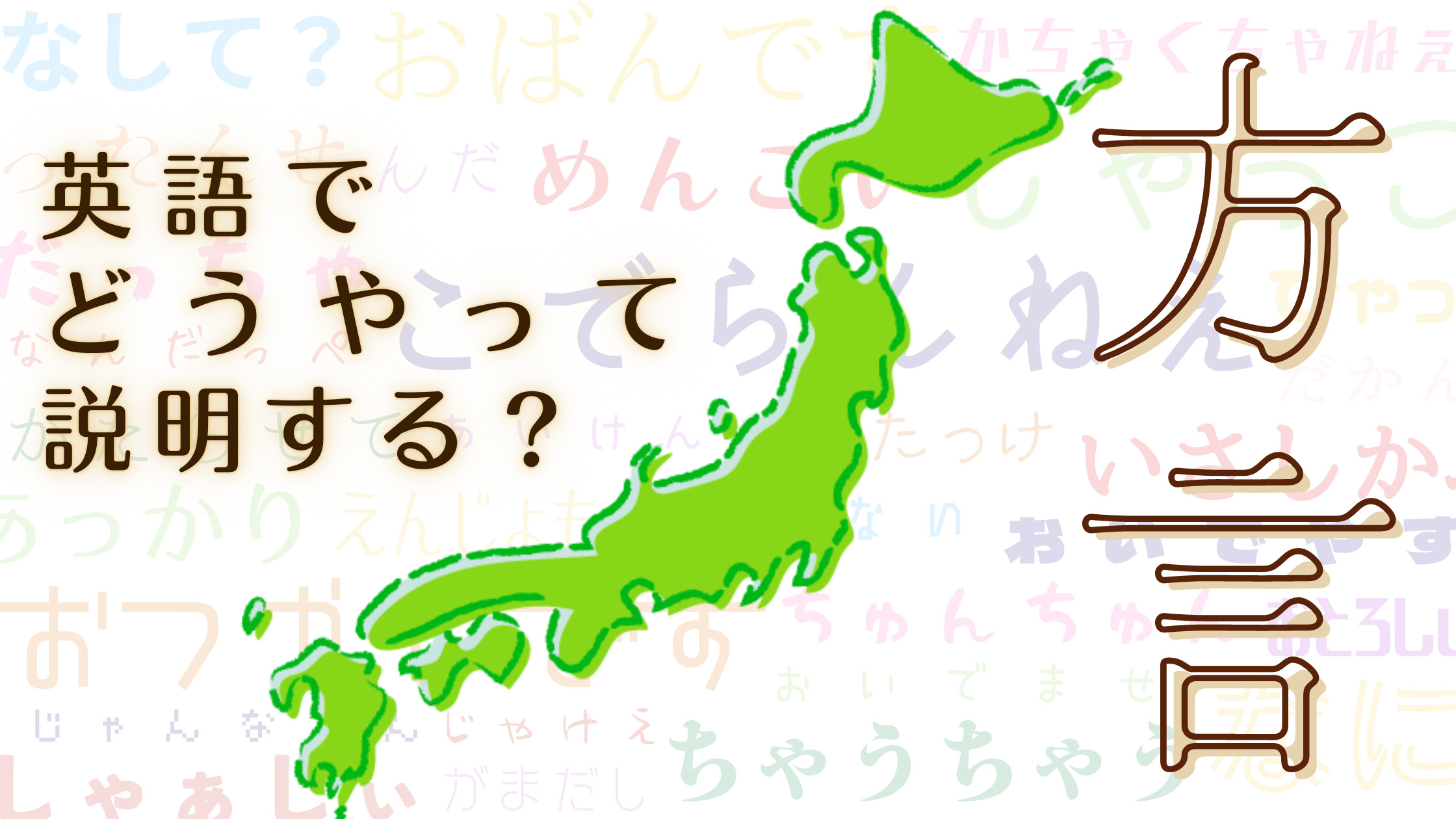日本には、様々な方言があります。日本語をある程度学んでいる外国人の方の中には、日本の方言に興味関心を持つ方も多いです。
そこで今回は、方言は英語で何と言うのか、エリアごとの方言について英語で紹介をする際に使える表現についてまとめました。
英語の記事:


【この記事を書いているのは…】
凡人
Webライター/ブロガー 高校時代の海外旅行がきっかけで英語に興味を持つ。大学時代には10ヵ国を旅し、TOEIC870点を取得。6年間の英語講師経験あり。現在は英語特化型のWebライターとして活動中。自身でもWebメディア「#オンライン英会話のある生活」(https://bonjinblog.com/)の運営を行っている。
Twitter:https://twitter.com/bonjineikaiwa
英語で「方言」は何と言う?
方言は英語で「dialect」と言います。日本に方言があるのと同じように、外国でも地域によって方言があります。
日本の方言について英語で説明する際に使う表現をまとめました。
When you travel around Japan or watch some anime, you might recognize people talk differently sometimes with unique accents.
日本を旅行したり、アニメを見たりすると、独特のアクセントや人によって話し方が違うことに気が付くかもしれません。
Japan consists of 47 prefectures and like other countries has the dialect of each region, Japan as well has distinct dialects in each region.
日本は47都道府県で構成されており、他の国と同様に各地域に方言があります。
From north to south, the Japanese dialect can be easily recognizable if you’ve learned the basics of Japanese.
日本語の基礎を学んだ方は、北から南まで、日本の方言を簡単に認識できるでしょう。
Although more people tend to speak standard Japanese nowadays and you can hardly catch any dialect especially if you live in Tokyo, you’ll be surprised how different the language can be when you meet the local people at your travel destinations.
最近は標準語を話す人が増え、特に東京に住んでいると方言を聞く機会はほとんどありませんが、旅行先で地元の人に会うと、言葉の違いに驚くでしょう。
様々な方言をエリアごとに英語で説明する
東北、関西、九州の方言について英語で説明する際に使える表現をまとめました。
東北地方の方言
They have some similarities to Hokkaido, and some dialects are used in both regions.
東北地方の方言は北海道といくつかの類似点があり、いくつかの方言は両方の地域で使用されています。
They generally have a unique accent that is very distinctive and recognizable.
東北地方の方言は、独特なアクセントを持っており、聞いただけで分かります。
Even native Japanese speakers sometimes find it difficult to understand what they say as they are pretty different from standard Japanese.
日本語を母国語とする人でも、東北地方の方言は標準語とはかなり異なるため、何を言っているのか理解するのが難しい場合があります。
- Nda (んだ): that’s right
Common and casual expression equivalent to “souda”/ “soudesu” in standard Japanese
標準語:「そうだ」「そうですね」 - Ume (うめ): tastes good/ yummy
It is a shorter version of “umai” (うまい) which means yummy or delicious in standard Japanese (“oishii” sounds more polite)
標準語:「おいしい」「うまい」 - Menkoi (めんこい): cute/ adorable
Adjective used to describe something cute or adorable, similar to “kawaii”
標準語:「可愛い」 - Shibareru (しばれる): It is extremely cold/ chilly outside
Common word which is used to mention about the freezing temperature
標準語:「寒い」 - Azumashi (あずまし/あずましい): comfortable/ pleasant
Adjective used to describe something comfortable
標準語:「心地よい」「快適」 - Idamashi (いだまし): waste
It means “what a waste!” / “Mottainai” (もったいない) in standard Japanese
標準語:「もったいない」
関西地方の方言
Kansai dialects are probably the most famous Japanese dialects of all.
関西弁は、おそらく最も有名な日本語の方言です。
They have a very unique accent that is quite different from the standard Japanese.
彼らは、標準的な日本語とはかなり異なる非常に独特なアクセントを持っています。
Another distinctive feature is a negative copula such as “hen” (へん) or “yanai” (やない), which is added at the end of verbs.
また、動詞の最後に「へん」や「やない」などの否定的な表現を付けるのも特徴です。
- Ookini (おおきに): Thank you
Common expression which means “thank you”, “arigato” (ありがとう) in standard Japanese.
標準語:「ありがとう」 - Oideyasu (おいでやす): Welcome
It is a famous Kyoto dialect which is often heard at sightseeing spots or used people working in traditional areas such as Gion (祇園).
標準語:「いらっしゃい」 - Maido (まいど): Thank you (at shops or restaurants)
It is a casual way to say “Thank you” which is most likely heard at shops or restaurants.
標準語:「ありがとう」 - Nanbo (なんぼ): How much?
It is used to ask the price at shops or restaurants which is equivalent to “Ikura” (いくら) in standard Japanese.
標準語:「いくら?」 - Kamahen (かまへん): I don’t care/ Never mind
In standard Japanese, “kamawanai” means “I don’t care”, which becomes “kamahen” in the Kansai dialect. It consists of two parts: “kamau” (かまう=do care), and the negative copula “hen” (へん) which is exclusively used in the Kansai region.
標準語:「気にしない」 - Chau (ちゃう): It isn’t/ That’s not true
It is a shorter version of “chigau” (ちがう) or “chigaimasu” (ちがいます) in standard Japanese which means “That’ not true”.
標準語:「違う」
九州地方の方言
The Kyushu dialect might sound a little harder to understand than other dialects such as the one of the Kansai region.
九州の方言は、関西地方の他の方言と比べると、少しわかりにくいかもしれません。
One of the most famous ones is Hakata dialect, which is spoken in Hakata area in Fukuoka prefecture.
その中でも有名なのが、福岡県の博多地方で話されている博多弁です。
- Yokayo (よかよ): That’s fine
It is equivalent to “iidesuyo” (いいですよ) in standard Japanese. Often used to agree someone’s suggestion or accept requests.
標準語:「いいですよ」 - Nanba shiyotto/Nan shitotto? (なんばしよっと?): What are you doing?
It can be translated as “What are you doing?” in English, and “Nani wo shite imasuka?” (何をしていますか) in standard Japanese.
標準語:「何してるの?」
まとめ
方言は英語で何と言うのか、エリアごとの方言について英語で紹介をする際に使える表現について解説しました。
外国人に方言について英語で説明をする際は、本記事で紹介した表現をぜひ使ってみてください。
あわせて読みたい
英語を活かして外国人ゲストをおもてなし!

- 日本の魅力を外国人に紹介したい
- 英語や語学を活かした仕事がしたい
- 人を喜ばせることが好き
そんな方にぴったりな仕事が通訳案内士やツアーガイドのお仕事です。
通訳案内士(ツアーガイド)は、一緒に街を歩いて、地域の歴史や文化をお話しながら、外国人ゲスト一人一人の旅が素敵なものになるようお手伝いします。
ガイドの印象によって、日本の印象が決まると言っても過言ではありません。
人を楽しませることが好きで、日本の魅力を世界に伝えたい!という情熱をお持ちの方は、ツアーガイドを目指しませんか?

JapanWonderGuide(JWG)は「日本のガイドの質を世界一に」をスローガンに掲げるガイドコミュニティです。2020年から活動を開始し、全国通訳案内士等を中心に、現在は、3,300名を超えるコミュニティとなっております。
JWGの有料会員(KNOTTER, ノッター)にご登録いただくと、月額1,000円(税込1,100円)で、ガイディングやビジネスに活きる知識・スキルが身につく研修動画、E-Learningが見放題!有料コンテンツを無料でご視聴いただけます。
そのほか、人気観光施設の最新情報や裏話をお届けするJWG Live!の見逃し配信、各研修の割引などをご利用いただけます。
さらに、有料、無料会員様ともに研修やイベント情報など、ガイドに役立つ内容がたっぷり詰まったメルマガを月に2回お届けします。
また、ガイド仲間を見つけ、交流できるFacebookグループにもご招待!情報交換の場としてお使いください。
【JWG会員でできること】
| フリーメンバー | KNOTTER | KNOTTER+ | |
| 料金 | 無料 | 月額1,000円 (税込1,100円) | 年間14,000円※ (税込15,400円) |
| 期間 | 無期限 | 毎月自動更新 | 2025年8月31日まで |
| ①メンバー限定Facebookグループご招待 | ○ | ○ | ○ |
| ②メンバー向けメルマガ受信 | ○ | ○ | ○ |
| ③JWG Live!見逃し配信 | △ | ○ | ○ |
| ④JWG主催研修割引 | – | ○ | ○ |
| ⑤JWG交流会へご招待 | 有料 | 無料 | 無料 |
| ⑥通訳案内研修 | – (3,500円) | 無料 | 無料 |
| ⑦JWG動画配信 | 有料 | 無料 | 無料 |
| ⑧通訳ガイド保険 | – | – | ○ |
※KNOTTER+の会費は加入月によって変動します
JWGでは、ガイドのスキルアップを目指す方や、ガイドに挑戦したい新人ガイドさんを応援します!
「学校の合間に」「週末だけ」
JapanWonderGuideと一緒に、ツアーガイドへの一歩を踏み出しませんか?





